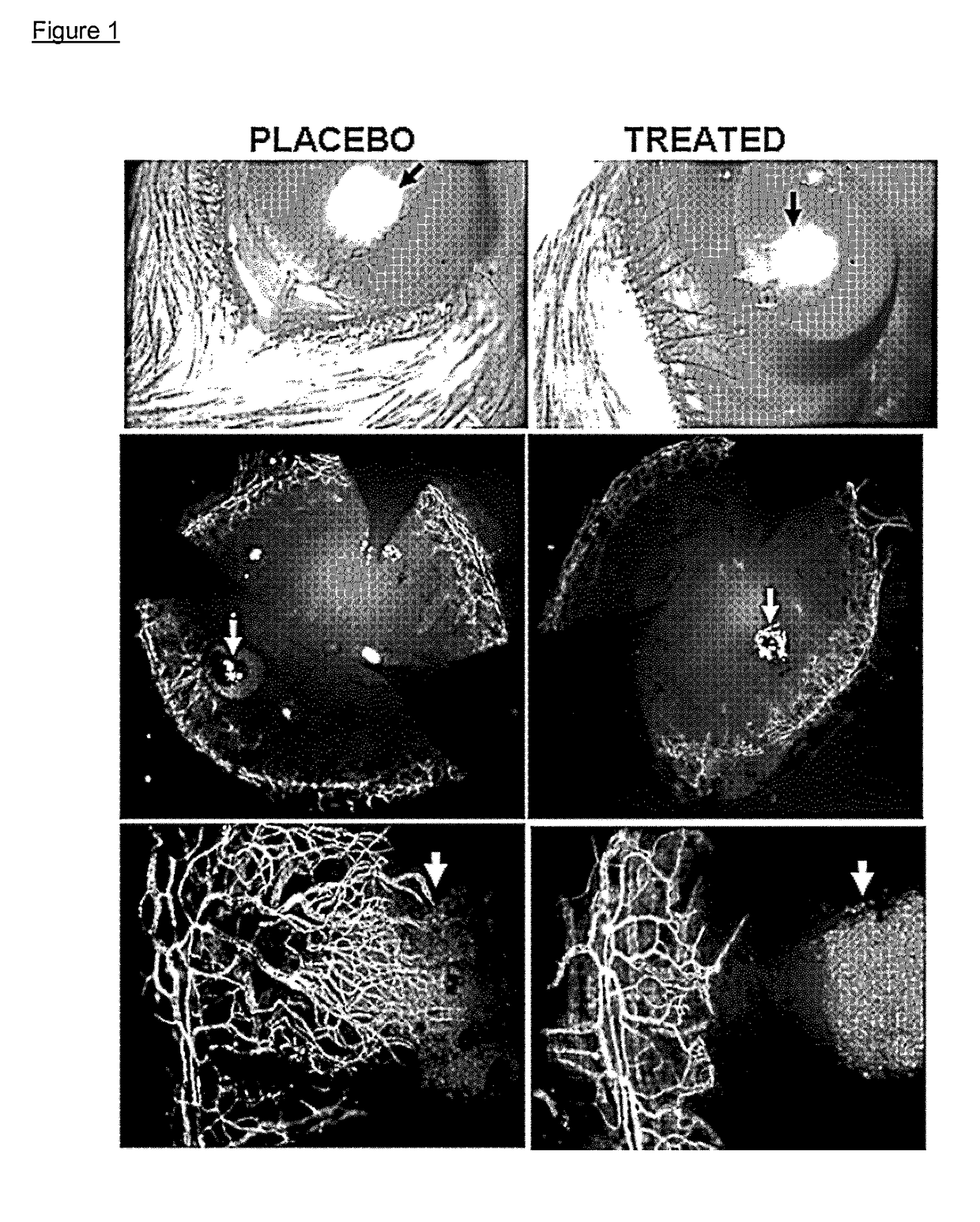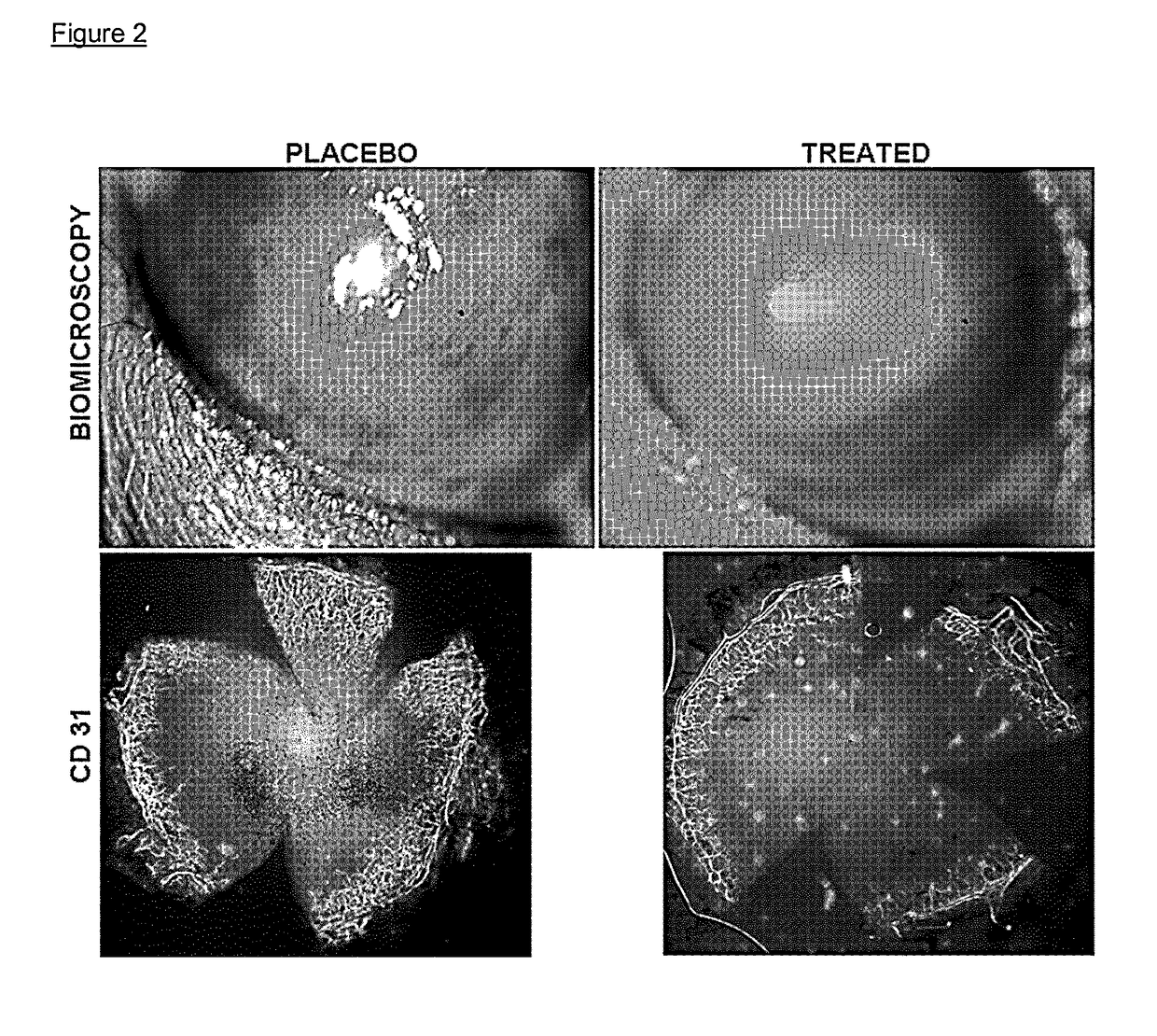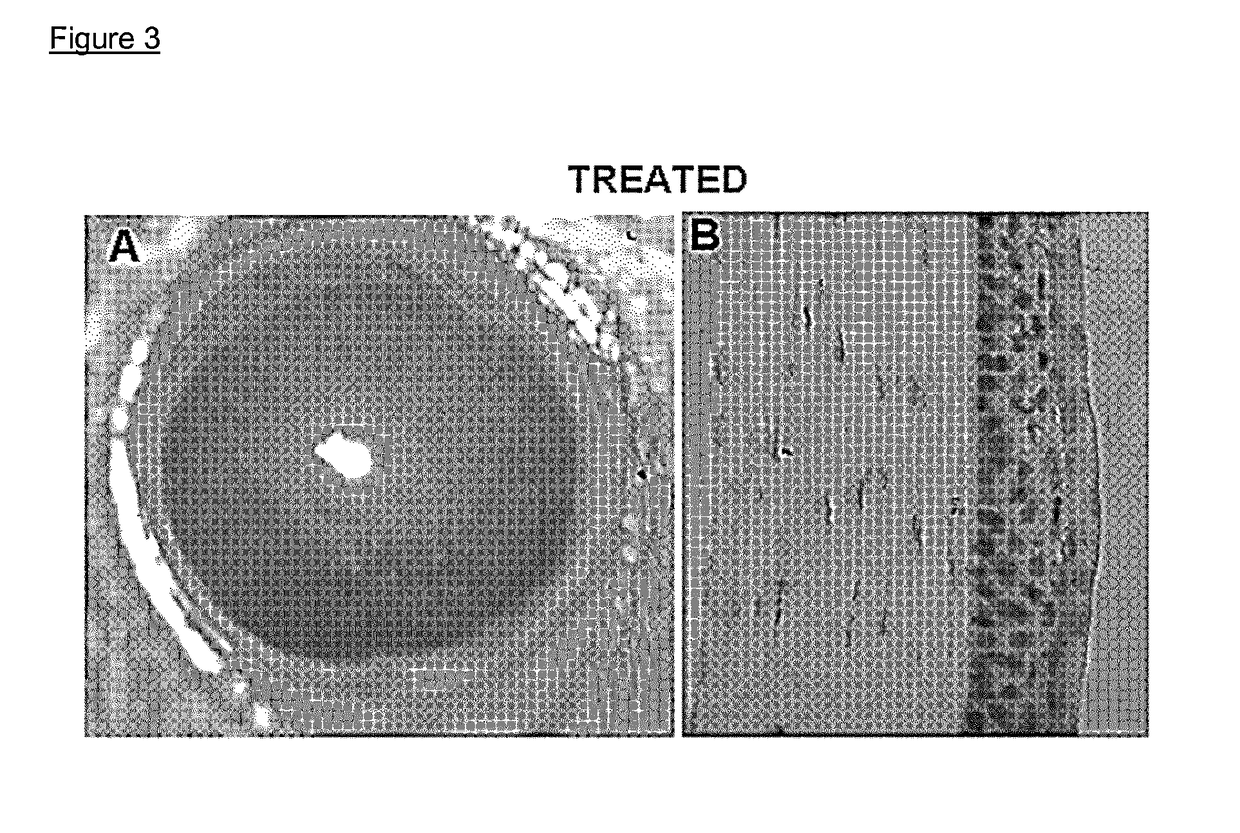Treatment of corneal neovascularization
a corneal neovascularization and treatment technology, applied in the direction of sense disorder, pharmaceutical active ingredients, medical preparations, etc., can solve the problems of widespread adverse effects, vision loss, and loss of ocular tissue, and achieve the effect of preventing cnv and treating i
- Summary
- Abstract
- Description
- Claims
- Application Information
AI Technical Summary
Benefits of technology
Problems solved by technology
Method used
Image
Examples
example 1
Inhibition of Corneal Neovascularisation in a Pellet Angiogenesis Model
[0592]Male 6- to 8-week-old C57Bl / 6 mice were treated to induce neovascularization using Fibroblast Growth Factor (FGF) 80 ng pellet implantation, a non-inflammatory model of corneal neovascularization (see Experimental Methods).
[0593]Immediately after pellet implantation, on Day 0, each group received one of the following topical treatments: (1) fosaprepitant (purchased from Universal Drug Store, Canada and diluted as per technical sheet instructions with 0.9% NaCl solution to reach a final concentration of 1 mg / ml) at the concentration of 1 mg / ml (one drop, 50 μl, per instillation, for a total amount of 0.05 mg of active principle per instillation) in the conjunctival sac 4 times per day for 1 week; or (2) phosphate buffered saline PBS as placebo. 5 mice per group were used. After taking photographs at the slit lamp, mice were sacrificed. Immunohistochemical staining was performed with FITC-conjugated CD31 / PECA...
example 2
Inhibition of Corneal Neovascularization in a Caustication Neovascularization Model
[0596]Male 6- to 8-week-old C57Bl / 6 mice were treated to induce neovascularization using sodium hydroxide caustication (see Experimental Methods)
[0597]Immediately after sodium hydroxide caustication, on Day 0, each group received one of the following topical treatments: (1) fosaprepitant (purchased from Universal Drug Store, Canada and diluted as per technical sheet instructions with 0.9% NaCl solution to reach a final concentration of 1 mg / ml) at the concentration of 1 mg / ml (one drop, 50 μl, per instillation, for a total amount of 0.05 mg of active principle per instillation) in the conjunctival sac 4 times per day for 1 week; or (2) phosphate buffered saline PBS as placebo. 5 mice per group were used. After taking photographs at the slit lamp, mice were sacrificed. Immunohistochemical staining was performed with FITC-conjugated CD31 / PECAM-1 to reveal corneal neovessels.
[0598]Neovascularization was ...
example 3
Toxicity of Fosaprepitant Following Topical Application in Healthy Eyes
[0600]Fosaprepitant toxicity was tested on the healthy cornea by administering to 3 healthy C57Bl / 6 mice fosaprepitant (purchased from Universal Drug Store, Canada and diluted as per technical sheet instructions with 0.9% NaCl solution to reach a final concentration of 1 mg / ml) at the concentration of 1 mg / ml in the conjunctival sac 4 times per day for 1 week. In vivo corneal biomicroscopy imaging and hematoxylin eosin ocular cross sections were checked as markers for toxicity.
[0601]No alteration of the corneal epithelium, stroma, or endothelium could be found at the slit lamp observation of healthy corneas upon topical fosaprepitant administration for up to 7 days (FIG. 3A). Hematoxylin-eosin staining of eyeball cross-sections appeared normal 7 days after daily administration of fosaprepitant, no anatomical alteration was detected in the epithelium, stroma, or endothelium (FIG. 3B).
[0602]FIG. 3A: slit-lamp exami...
PUM
| Property | Measurement | Unit |
|---|---|---|
| pH | aaaaa | aaaaa |
| pH | aaaaa | aaaaa |
| pH | aaaaa | aaaaa |
Abstract
Description
Claims
Application Information
 Login to View More
Login to View More - R&D
- Intellectual Property
- Life Sciences
- Materials
- Tech Scout
- Unparalleled Data Quality
- Higher Quality Content
- 60% Fewer Hallucinations
Browse by: Latest US Patents, China's latest patents, Technical Efficacy Thesaurus, Application Domain, Technology Topic, Popular Technical Reports.
© 2025 PatSnap. All rights reserved.Legal|Privacy policy|Modern Slavery Act Transparency Statement|Sitemap|About US| Contact US: help@patsnap.com



